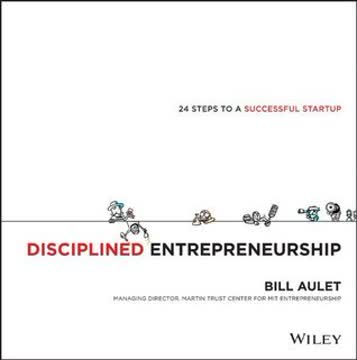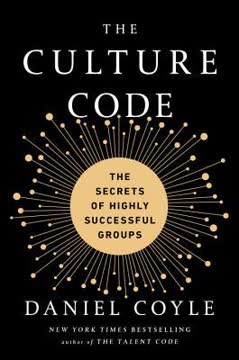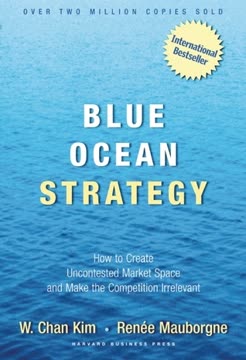Key Takeaways
1. Embrace a sales mindset: Abundance, activity, and fearlessness
Reject a mindset of scarcity—and, hence, hoarding—and embrace a mindset of plenty.
Abundance mentality. In sales, there's always another opportunity. Don't get hung up on a single prospect or deal. Instead, focus on maximizing your activity and output. This mindset shift allows you to:
- Be more direct and efficient in your interactions
- Take calculated risks without fear of rejection
- Build many shallow relationships rather than a few deep ones
Activity is key. Prioritize action over perfection. The more calls you make, emails you send, and demos you give, the higher your chances of success. Remember:
- Quantity has a quality all of its own
- Don't overthink; just act
- Use tools and technology to increase your output
2. Craft a compelling sales narrative and materials
Your sales narrative will likely be a recasting of other content your organization may already have documented.
Develop your story. Create a clear, concise narrative that addresses:
- The problem your product solves
- Who experiences this problem
- The costs associated with the problem
- How people currently solve it (and why that's insufficient)
- What has changed to enable a new solution
- How your solution works
- Proof that your solution is better
Create essential materials. Develop a core set of sales tools:
- Sales deck with clear, visually appealing slides
- Email templates for various stages of outreach
- Phone scripts for cold calling and follow-ups
- Demo script highlighting key features and benefits
- Video content for quick overviews and explanations
Remember to iterate on these materials based on feedback and results. Prioritize speed and relevance over perfection.
3. Master the art of prospecting and lead qualification
The absolute best way to stop selling to people who don't have your pain point is to be able to identify, based on some number of key characteristics, accounts and contacts who do have your pain point.
Define your ideal customer profile. Clearly articulate the characteristics of your target accounts and decision-makers. Consider:
- Company size, industry, and location
- Specific pain points and challenges
- Current solutions and spending patterns
- Decision-making processes and timelines
Implement effective qualification processes. Use a combination of:
- Outbound research using tools like LinkedIn, Data.com, and industry-specific databases
- Inbound lead capture forms that gather essential qualifying information
- Discovery questions during initial conversations to validate fit
Prioritize quality over quantity in your prospecting efforts. It's better to have fewer, highly qualified leads than a large pool of poor-fit prospects.
4. Perfect your outreach and appointment-setting strategies
Email is your friend. It is an extremely powerful means of directed outreach toward prospects, when done correctly.
Develop a multi-channel approach. Combine email, phone, and social media outreach for maximum impact. Key strategies include:
- Personalized, value-focused email templates
- Cadenced follow-ups across multiple channels
- Voicemail scripts that pique interest and drive action
Leverage technology. Use tools to increase efficiency and effectiveness:
- Email tracking software (e.g., Yesware, SalesLoft)
- Auto-dialers and local presence phone numbers
- CRM integration for seamless activity logging
Master the art of persistence. Follow up consistently without being pushy. Aim for 6-8 touch points before moving on, using a mix of channels and messaging.
5. Deliver impactful pitches and demos
The goal of the presentation is the communication of information that drives a prospect toward a commercial transaction.
Structure your pitch effectively. Follow this general flow:
- Build rapport and set the agenda
- Conduct (re)discovery to validate pain points
- Present your solution, tying features to specific benefits
- Demonstrate the product, focusing on high-impact use cases
- Provide proof points (case studies, ROI calculations)
- Handle objections and close for next steps
Customize and engage. Tailor your presentation to each prospect:
- Use their data or scenarios in your demo when possible
- Ask questions throughout to maintain engagement
- Validate understanding and build agreement at each step
Practice and iterate. Continuously refine your pitch based on feedback and results. Consider recording your demos for self-review and team training.
6. Navigate objections and close deals effectively
Objections should be viewed as a positive—it's a signal of an engaged prospect who's actually thinking about how your solution could potentially impact her business.
Anticipate common objections. Prepare responses for typical concerns:
- Lack of budget or authority
- Timing and competing priorities
- Perceived lack of need or value
- Competitor comparisons
Use a systematic approach to handling objections:
- Listen and acknowledge the concern
- Ask clarifying questions to understand the root issue
- Reframe the objection in terms of your solution's value
- Provide evidence or examples to support your position
- Confirm resolution and move forward
Master closing techniques. Learn to:
- Ask for the sale directly and confidently
- Use assumptive closes when appropriate
- Offer options to facilitate decision-making
- Create urgency without being pushy
7. Implement robust customer success practices
In a SaaS world, the reality is that the moment you close a new customer, it's a countdown to when they will be renewing, or not renewing, their contract.
Prioritize customer onboarding. Develop a structured implementation process:
- Conduct thorough kickoff calls with clear agendas
- Provide hands-on training and guided setup
- Set specific goals and milestones for early adoption
Monitor and drive adoption. Use data and proactive outreach to ensure customer success:
- Track usage metrics and engagement levels
- Conduct regular check-ins and business reviews
- Offer ongoing training and best practice sharing
Focus on expansion and retention. Implement strategies to grow accounts and prevent churn:
- Identify upsell and cross-sell opportunities
- Gather and act on customer feedback
- Develop a systematic renewal process
Remember, customer success is an ongoing effort that requires consistent attention and resources. It's not just about preventing churn, but about creating advocates who will drive referrals and long-term growth.
Last updated:
FAQ
What's Founding Sales - The Startup Sales Handbook about?
- Focus on Startup Sales: Founding Sales by Peter Kazanjy is a comprehensive guide for founders and early-stage sales leaders on effectively selling products and scaling sales organizations.
- Two Stages of Sales: It outlines two main stages: "figuring it out" and "scaling it," emphasizing the need for a solid foundation before scaling.
- Practical Frameworks: The book provides actionable frameworks and methodologies, making it a practical resource for those new to sales or refining their approach.
- Emphasis on Customer Success: It highlights the importance of customer success in retaining clients and driving growth, ensuring sales efforts translate into long-term relationships and revenue.
Why should I read Founding Sales - The Startup Sales Handbook?
- Targeted Audience: This book is specifically designed for founders and early-stage sales professionals, addressing the unique challenges faced by these individuals.
- Proven Strategies: Peter Kazanjy shares strategies tested in real-world scenarios, providing insights that can lead to immediate improvements in sales processes.
- Comprehensive Coverage: It covers a wide range of topics, from hiring and onboarding to managing sales teams, ensuring a holistic understanding of building a successful sales organization.
- Avoid Common Pitfalls: The book helps readers avoid common mistakes, such as scaling sales too quickly without a solid foundation.
What are the key takeaways of Founding Sales - The Startup Sales Handbook?
- Mindset Changes: Founders must adopt a sales mindset that embraces activity, directness, and a belief in the inevitability of sales.
- Building a Narrative: Crafting a cohesive sales narrative is essential for effectively communicating the value of your product to potential customers.
- Importance of Customer Success: Documenting and sharing customer success stories is crucial for reinforcing product value and maintaining customer loyalty.
- Quarterly Business Reviews (QBRs): Implementing QBRs helps assess customer relationships and demonstrate ROI, solidifying renewals and encouraging further investment.
What are the best quotes from Founding Sales - The Startup Sales Handbook and what do they mean?
- “You can’t build a revenue house based on outbound selling without a solid foundation.”: Highlights the necessity of establishing a strong sales foundation before scaling.
- “Sales is about math.”: Emphasizes the importance of understanding metrics and data for tracking performance and making informed decisions.
- “Spend good time with good opportunities.”: Encourages focusing efforts on high-potential prospects to maximize sales efficiency.
- "If it’s not in Salesforce, it doesn’t count.": Stresses the importance of using CRM systems to track sales activities and ensure accountability.
What are the two stages of sales efforts discussed in Founding Sales - The Startup Sales Handbook?
- Figuring It Out: Involves understanding the market, identifying customer pain points, and developing a resonant sales narrative.
- Scaling It: Focus shifts to scaling sales operations, including hiring staff, refining processes, and optimizing performance metrics.
- Importance of Sequence: Attempting to scale before fully understanding the sales process can lead to disastrous outcomes.
- Mastery of First Stage: Kazanjy stresses the importance of mastering the initial stage before moving to scaling efforts.
How does Founding Sales - The Startup Sales Handbook suggest building a sales narrative?
- Problem-Solution Framework: Recommends using a "problem-solution-specifics" narrative framework to clearly identify the problem and how the solution addresses it.
- Iterative Process: Building the narrative is an iterative process that evolves based on market feedback and customer interactions.
- Cohesive Messaging: A well-crafted narrative serves as the foundation for all sales materials, ensuring consistent messaging across various platforms.
What mindset changes does Founding Sales - The Startup Sales Handbook recommend for first-time sales professionals?
- Embrace Plenty, Not Scarcity: Focus on the numerous opportunities available rather than hoarding resources or time.
- Activity Above All Else: Prioritize sales activity; more calls, emails, and demos increase the chances of closing deals.
- Expect to Win, But Be Unfazed by Rejection: Maintain confidence in the sales process while being resilient to rejection.
What is the concept of "cadencing" in Founding Sales - The Startup Sales Handbook?
- Systematic Outreach: Cadencing involves a structured approach to outreach, alternating between emails, calls, and voicemails over a set period.
- Flexibility in Execution: Allows for flexibility based on specific sales process needs, adjusting cadence based on content and responses.
- Contextual Data Utilization: Encourages using contextual data, like email opens and clicks, to prioritize outreach efforts.
How does Founding Sales - The Startup Sales Handbook define customer success?
- Proactive Engagement: Actively ensuring customers achieve desired outcomes using your product through regular check-ins and support.
- Quarterly Business Reviews (QBRs): Key strategy for reinforcing customer success, assessing progress against goals, and showcasing ROI.
- Documentation of Success: Emphasizes documenting customer successes and sharing them to reinforce product value and build long-term relationships.
What specific methods does Founding Sales - The Startup Sales Handbook recommend for hiring?
- Define a Hiring Profile: Create a detailed profile outlining desired characteristics like intellectual acumen, resourcefulness, and persistence.
- Use Multiple Sourcing Channels: Leverage staffing agencies, referral recruiting, job boards, and direct sourcing strategically.
- Screening Process: Implement a rigorous screening process, including written screens and mock presentations, to authenticate candidates' abilities.
How does Founding Sales - The Startup Sales Handbook suggest onboarding new sales staff?
- Structured Onboarding Program: Advocates for a university-style program with pre-work, cultural acclimation, and training on market and product knowledge.
- Drilling and Repetitions: Emphasizes practice through group drilling and sparring sessions to develop muscle memory for sales presentations.
- Ongoing Learning: Onboarding should include ongoing training and development to keep sales staff updated on product changes and market dynamics.
What are the anti-patterns in scaling sales according to Founding Sales - The Startup Sales Handbook?
- Premature Scaling: Warns against hiring too many sales staff before proving the sales motion works, leading to inefficiencies.
- Lagged Scaling: Failing to scale when the opportunity arises can result in lost market share and revenue.
- Hiring for the Wrong Reasons: Hiring based on pedigree without considering fit for the current organization can lead to poor performance.
Review Summary
Founding Sales is highly praised as an essential guide for startup founders and sales leaders. Readers appreciate its practical, actionable advice and comprehensive coverage of sales strategies. Many consider it a must-read, citing its valuable insights for early-stage companies and B2B businesses. The book's detailed approach to building and scaling sales organizations is frequently highlighted. While some find it repetitive or long-winded, the majority of reviewers commend its real-world examples and applicability. Overall, it's regarded as one of the best resources for understanding and implementing effective startup sales practices.
Similar Books










Download PDF
Download EPUB
.epub digital book format is ideal for reading ebooks on phones, tablets, and e-readers.




